The United States is home to a wide variety of unique reptiles, especially snakes. Among these slithering creatures, there are a few very large snakes.
Interestingly, few of these indigenous snakes in the U.S. rank among the largest ones discovered in the country.
We’re going to take a look at the largest snake ever caught in the United States, both native and invasive. We’ll also show you how that record could change in the near future.
Get ready to never look at a patch of tall grass in the southeastern United States the same way again!
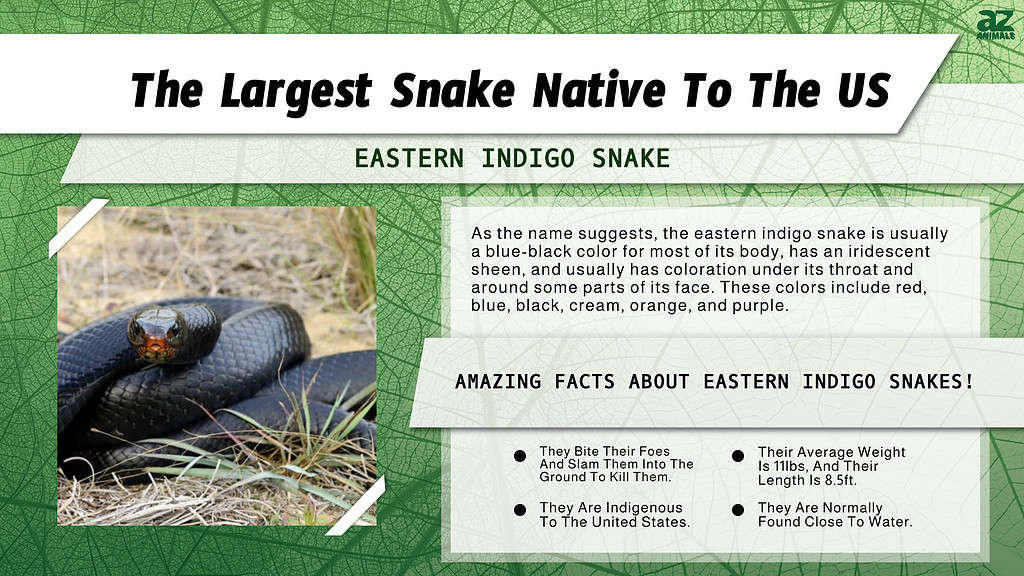
Comparing the Largest Snakes in the United States
Image needed: eastern indigo, Burmese python, and green python
| Category | Eastern Indigo Snake | Burmese Python | Green Anaconda |
| Size | Weight: 11lbs Length: 8.5ft | Weight: 200lbs Length: 23ft | Weight: 441lbs Length: 22ft |
| Current Range in the U.S. | Florida, Georgia, South Carolina, Alabama, and Mississippi | Southeast Asia, United States (Florida) | South America, North America (Florida Everglades) |
| Place of Origin | Indigenous to the United States | – India, Nepal, Laos, Thailand, and others. | South America, east of the Andes |
The Largest Snake Native to the United States
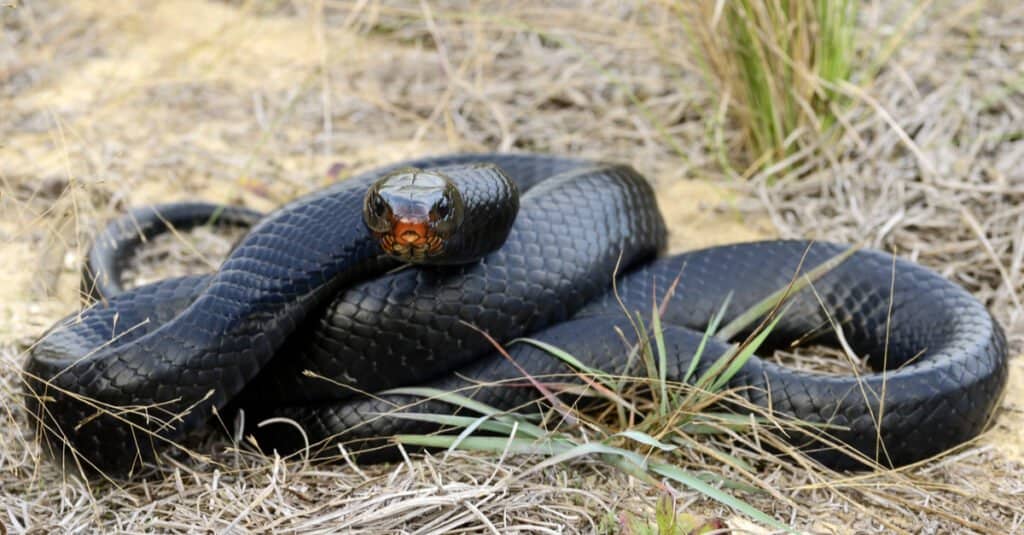
Eastern indigo snake (Drymarchon couperi) lying in grass. The Eastern Indigo Snake is the longest snake in America.
©Patrick K. Campbell/Shutterstock.com
The largest native snake in the United States is the eastern indigo snake, a non-venomous snake that can grow up to 8.5 feet in length and weigh up to 11 pounds.
The eastern indigo snake is found in the southeastern United States, especially in Florida, Georgia, South Carolina, Alabama, and Mississippi. The snake is usually found close to water.
As the name suggests, the eastern indigo snake is usually a blue-black color for most of its body, has an iridescent sheen, and usually has coloration under its throat and around some parts of its face. These colors include red, blue, black, cream, orange, and purple.
The eastern indigo snake is not venomous, but it likes to attack and kill other venomous snakes for food. This snake is not a constrictor, either. The eastern indigo snake bites its foes and slams them into the ground to kill them.
The eastern indigo snake is the largest indigenous snake in the U.S., but it’s not even half as long as the largest snake ever captured in the country.
The Largest Invasive Snake Species Ever Caught in the United States
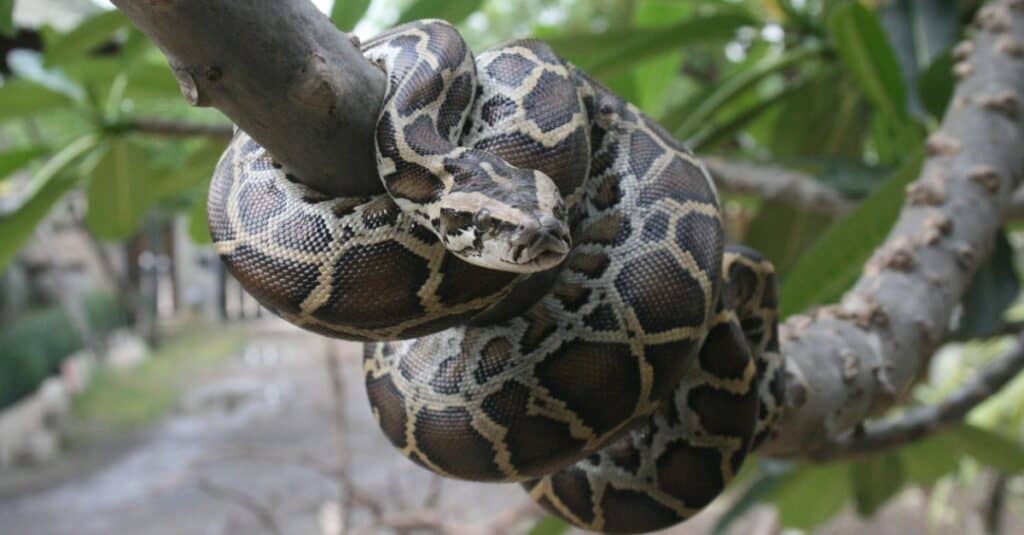
The Burmese python is able to swallow animals as large as a
deer
.
©iStock.com/Lunatic_67
The Burmese python is the largest invasive snake species ever caught in the United States, measuring 18 feet and 9 inches long, and weighing 104 pounds. This snake is much bigger than the native eastern indigo snake. All of the current records for the largest captured or killed snakes in the United States are held by these pythons.
Few of the snakes caught in the U.S. have reached the supposed maximum size of these snakes, 23 feet long and 200 pounds. In 1989, trapper Todd Hardwick caught a 22-foot, 250lb reticulated python that had taken up residence near a south Florida home. This invasive species of snake is gigantic compared to the eastern indigo snake.
As we’ve mentioned, the Burmese python is not native to the United States; they come from Asia. It’s believed that exotic pet owners were introduced into the wild by letting them go or having improper security for the snakes. However, Hurricane Andrew did the most damage by destroying a breeding facility and releasing hundreds.
Now, they are a widespread, deadly predator in the Florida Everglades, and they lack a predator to keep their population in check.
Unlike the eastern indigo snake, the Burmese python is a constrictor that bites its enemies and then wraps around them to crush them to death.
The Largest Snake in the World Now Lives in the U.S.
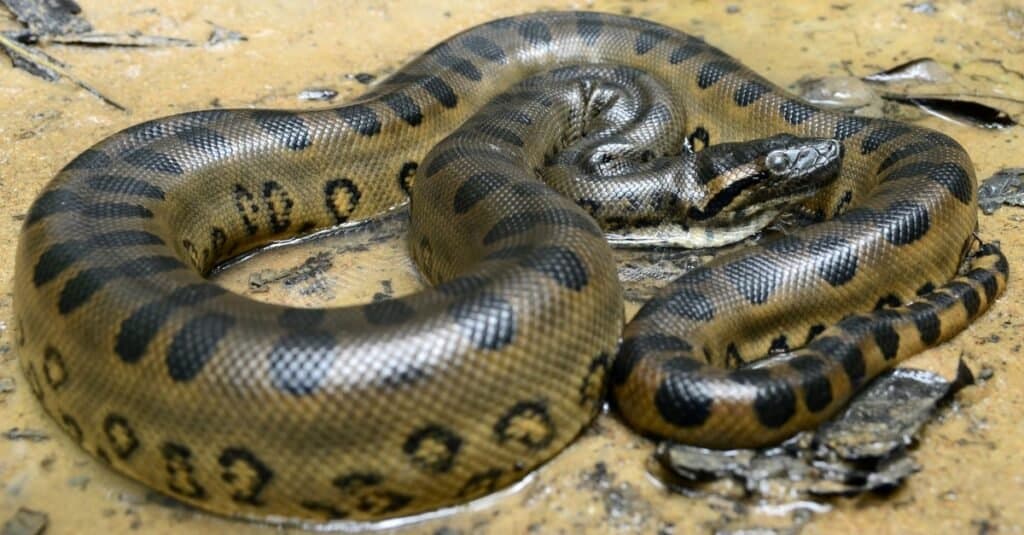
A Green anaconda (Eunectes murinus), which is especially partial to flooded grassland, like those found in Florida
©Patrick K. Campbell/Shutterstock.com
Green anacondas, the largest snake species in the entire world, have been found in the Florida Everglades. That fact is going to shake up this list at some point. Based on their massive size, it seems likely that the green anaconda will overtake the Burmese python as the largest snake living in the United States.
It’s currently unknown how these snakes have made it from their native South America up to Florida. Their origin could be the same as other invasive species: bad pet owners.
The green anaconda can grow between 17 and 22 feet long. Some supposed lengths of over 30 feet have been claimed in recent years. These massive snakes can weigh anywhere up to 500lbs or more.
These snakes have been captured infrequently in recent years, but they are certainly present in Florida in small numbers. With their high birth rates and lack of predators, it’s possible that the green anaconda could become the next significant invasive species in the United States.
Identifying these creatures is hard because they are difficult to find. These snakes are often olive in color, very long, and very thick-bodied. They love spending time in water, and they blend in with their surroundings rather well.
Anacondas are constrictors. That means that their primary method of killing prey involves ambushing, wrapping their bodies around them, and crushing or choking them to death.
Why Are the Biggest Snakes Constantly Found in Florida?
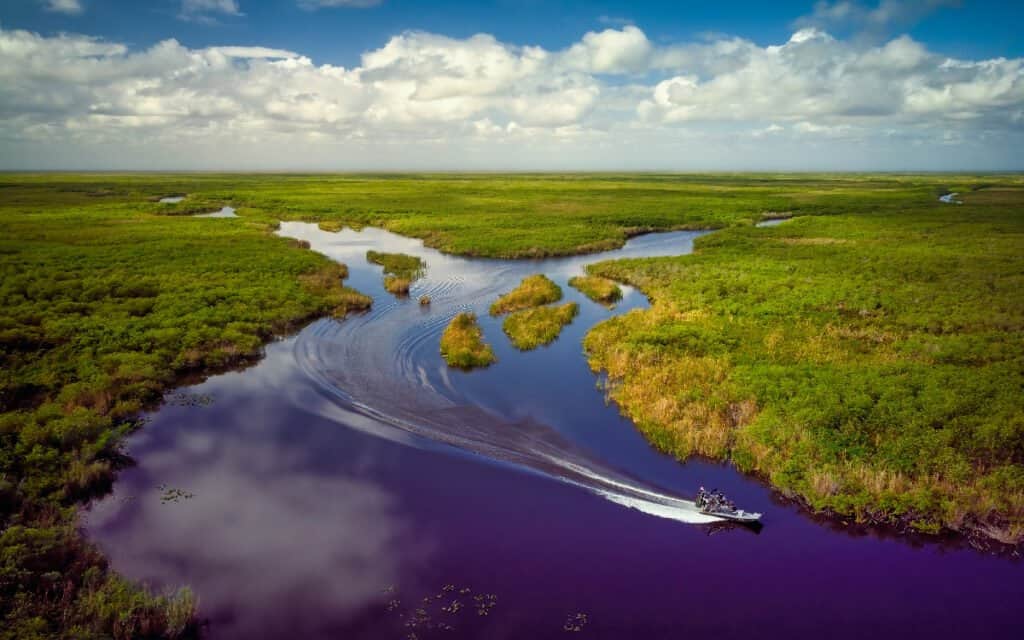
The Everglades is the biggest tropical wilderness in the U.S.
©iStock.com/Robert DelVecchio – OcuDrone
One question that constantly emerges when talking about the largest snakes in the United States is: why do they all end up in Florida?
The eastern indigo snake probably flourished there because there are not many natural predators for them, and abundant food exists in that habitat. Food and safety are always primary reasons for species to flourish in any given area.
However, the invasive species of the green anaconda and the Burmese python made their way to Florida in the hands of exotic pet owners. When they became too large for these individuals to care for, they released them into the wild where they were either directly inserted into the Florida Everglades or merely found safety and food in that area.
Other conjectures suggest that these animals had escaped their enclosures and made their way into the wild. The lack of natural predators for large snakes in this part of Florida has allowed for these snakes to take root.
Either the snakes did not extend their territory beyond the relative safety of Florida because they’re slow-moving, or they were killed off beyond that territory.
Either way, this state is struggling to prevent these invasive species from damaging the delicate ecology. Mammal populations are shrinking since these snakes arrived. Also, the snakes are breeding too quickly for humans to stop them.
Lastly, the looming threat of an exploding green anaconda population could add another dimension of difficulty to the problem.
The photo featured at the top of this post is © Patrick K. Campbell/Shutterstock.com
Discover the "Monster" Snake 5X Bigger than an Anaconda
Every day A-Z Animals sends out some of the most incredible facts in the world from our free newsletter. Want to discover the 10 most beautiful snakes in the world, a "snake island" where you're never more than 3 feet from danger, or a "monster" snake 5X larger than an anaconda? Then sign up right now and you'll start receiving our daily newsletter absolutely free.
Thank you for reading! Have some feedback for us? Contact the AZ Animals editorial team.






